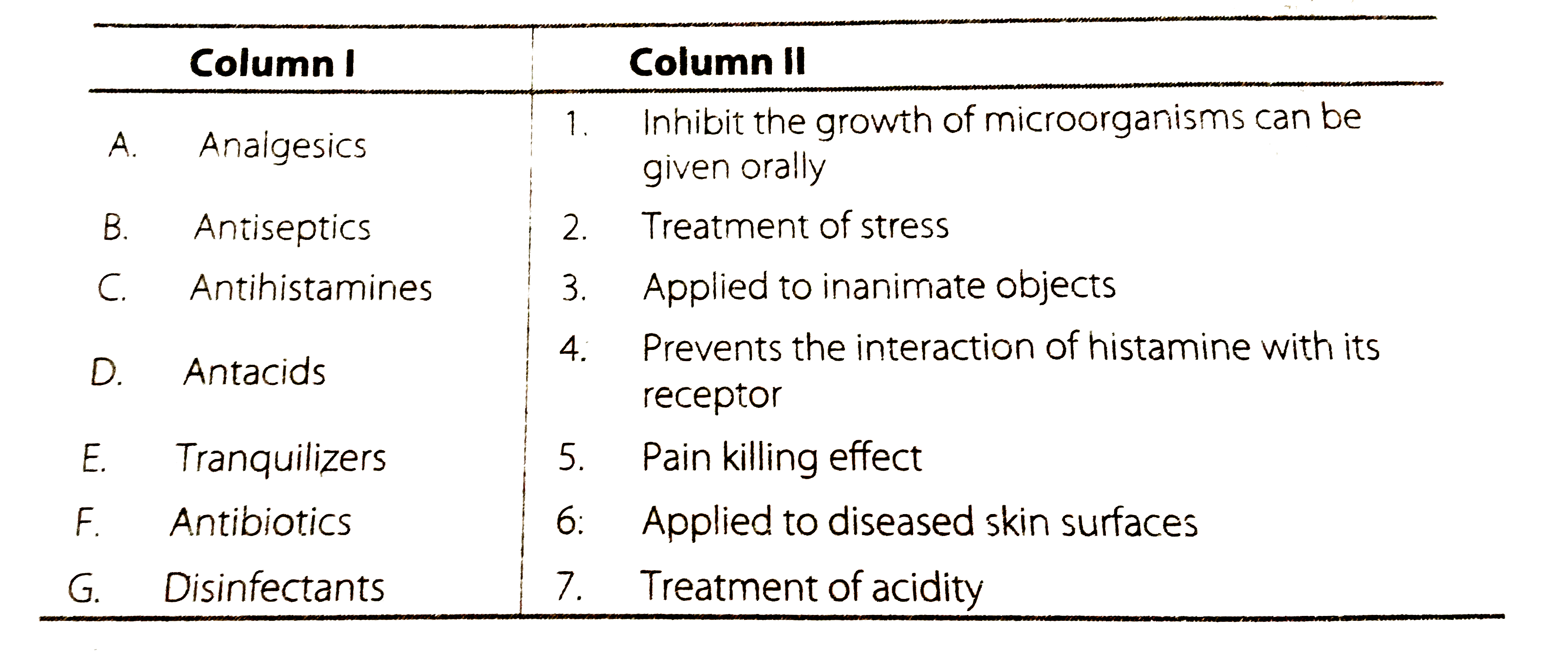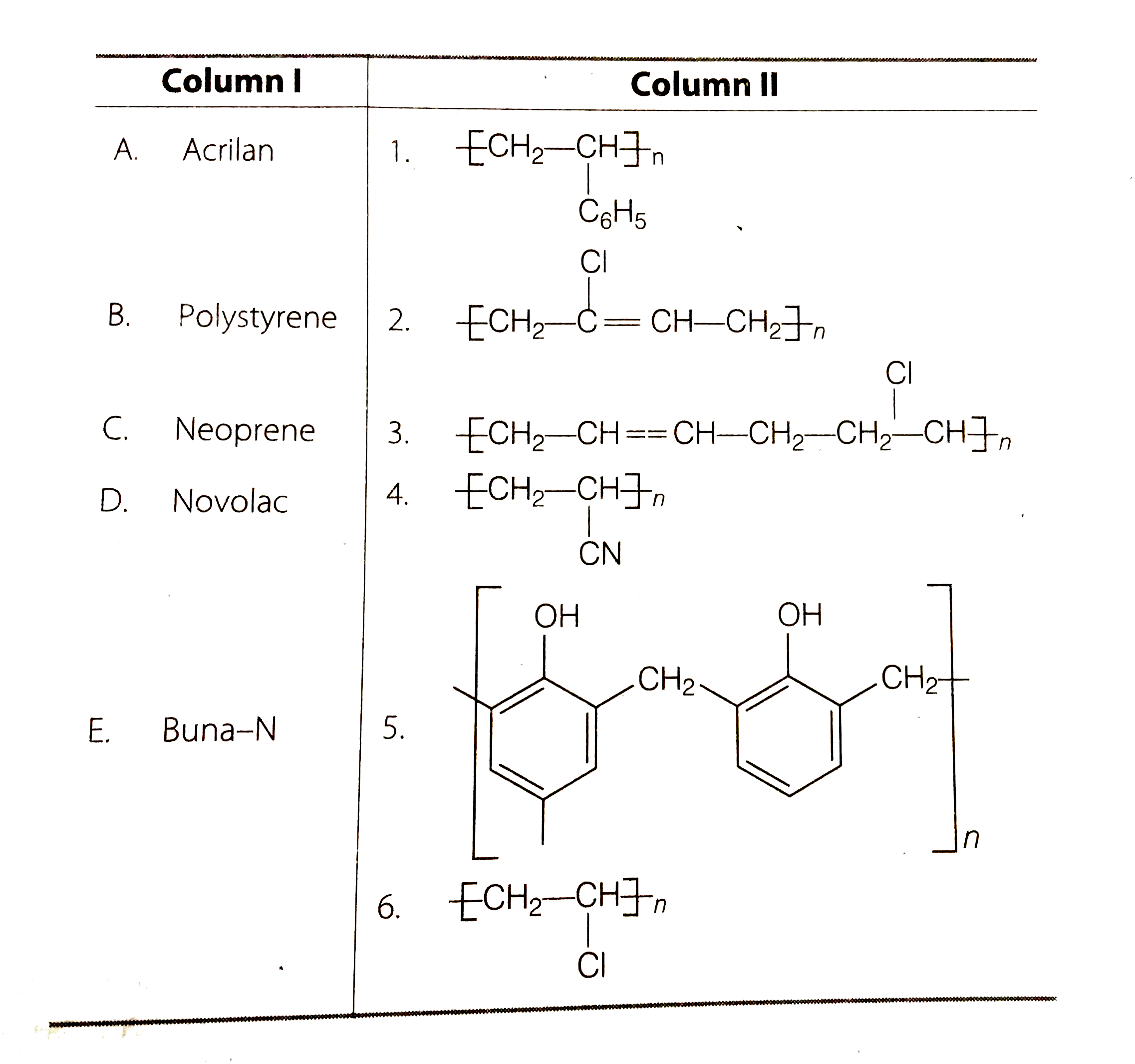Match the polymers given in column I with their main applications given in column II

Video Solution
Text Solution
(a)−(iv),(b)−(v),(c)−(i),(d)−(vi),(e)−(ii),(f)−(iii)
|
Topper's Solved these Questions
- POLYMERSBOOK - MODERN PUBLICATIONCHAPTER - POLYMERSEXERCISE - NCERT (EXemplar Problems) (Assertion and Reason Type Questions)
7 Videos
- POLYMERSBOOK - MODERN PUBLICATIONCHAPTER - POLYMERSEXERCISE - QUICK MEMORY TEST (Accelerate your potential for Objective Questions)(A. Say True of False)
10 Videos
- POLYMERSBOOK - MODERN PUBLICATIONCHAPTER - POLYMERSEXERCISE - NCERT (EXemplar Problems) (Short Answer Type Questions)
18 Videos
- ORGANIC COMPOUNDS CONTAINING NITROGEN BOOK - MODERN PUBLICATIONCHAPTER - ORGANIC COMPOUNDS CONTAINING NITROGEN EXERCISE - UNIT PRACTICE TEST
5 Videos
- SOLID STATEBOOK - MODERN PUBLICATIONCHAPTER - SOLID STATEEXERCISE - UNIT PRACTICE TEST
13 Videos
Similar Questions
Knowledge Check
Match the polymers given in Column I with their commercial names given in Column II.
 AA-4,B-3,C-2,D-1,E-5BA-2,B-3,C-1,D-5,E-4CA-2,B-1,C-3,D-4,E-5DA-2,B-1,C-3,D-5,E-4
AA-4,B-3,C-2,D-1,E-5BA-2,B-3,C-1,D-5,E-4CA-2,B-1,C-3,D-4,E-5DA-2,B-1,C-3,D-5,E-4Match the chemical substances given in column I with their appropriate application given in column II
 AABCD2143BABCD3241CABCD3412DABCD2413
AABCD2143BABCD3241CABCD3412DABCD2413
Match the polymers given in Column I with their repeating units given in Column II.

View SolutionMatch the polymers given in Column I with their commercial names given in Column II.

View SolutionMatch the polymers given in Column-I with their commercial names given in column-II.

View SolutionMatch the polymer given in Column I with their chemical names given in Column II

View SolutionMatch the classes of drugs given in Column I with their action given in Column II.

View SolutionMatch the reactions given in column I with the types of reactions given in column II.
 .
.
View Solution


